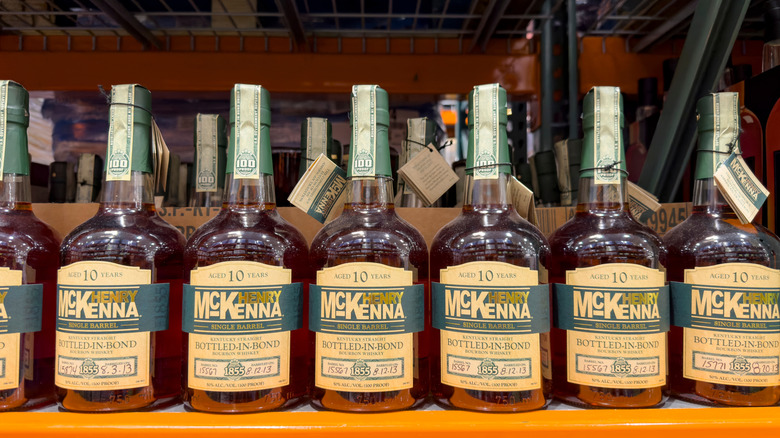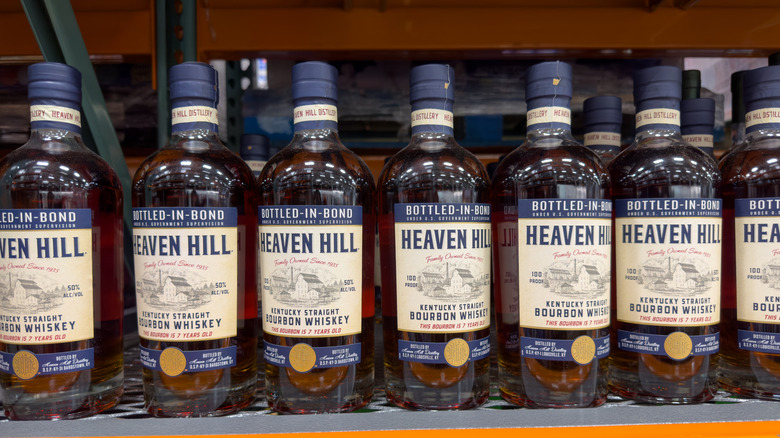What's So Special About Bottled-In-Bond Whiskey?
Even if you're a whiskey aficionado, you may have seen the words "bottled-in-bond" on labels and not understood what it meant. What is the significance of that term, and what's so special about bottled-in-bond whiskey?
In the 19th century, when liquor was often sold in barrels in the U.S., it was easy to tamper with. Dishonest distillers would put things like wood chips and even formaldehyde in the vessels to cut corners and lead consumers to believe they were getting pure liquor. It wasn't long before the government stepped in.
In 1897, the Bottled in Bond Act was passed to protect consumers from those shady practices. A spirit could only be called bottled-in-bond if it was distilled by a single distillery within one distillation season, had aged for four years in a federally-approved warehouse, and was bottled at 50% ABV — a high-proof like that can be the perfect proof for cocktails, by the way. Those rules for bottled-in-bond whiskey are still in place today, though dubious distilling practices are largely a thing of the past.
Other spirits can be bonded
Any type of hard liquor made in the U.S. can qualify as bottled-in-bond. Some brandies, such as applejack, carry the designation as well as some rums. As with whiskey, those spirits must also meet the distilling and aging criteria to be considered bottled-in-bond.
With the influx of small distilleries in today's market, the bottled-in-bond designation has grown in importance, at least for some consumers. While no one is really accusing today's craft distillers of adding formaldehyde to spirits, the bonded designation does help to ensure consumers are getting liquor made with care and time-honored processes.
The next time you create your own whiskey flight, include a spirit with the bottled-in-bond designation on the label. Take a sip and see if you can detect why the spirit has earned a seal of quality that's been used for over 120 years.

